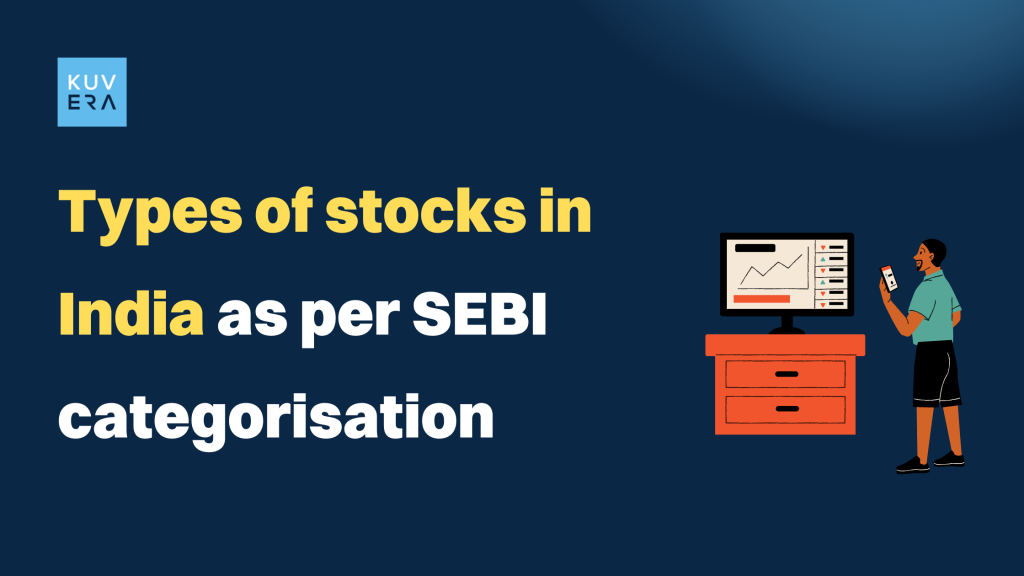Investing in stocks is a gateway to potential wealth creation and financial growth. In the dynamic Indian stock market, various types of stocks cater to diverse investment preferences and risk appetites. As an investor, understanding the different types of stocks available can help you make informed decisions and build a well-diversified portfolio.
In an effort to streamline and bring clarity to the Indian stock market, the Securities and Exchange Board of India (SEBI) introduced a categorisation and rationalisation framework for mutual funds. As part of this initiative, stocks have been classified into different categories based on their market capitalisation, investment objectives, and risk profiles.
In this blog, we’ll delve into the fascinating realm of stocks in India, exploring the different types and their unique characteristics.
1. Large-cap Stocks:
Large-cap stocks belong to companies with the highest market capitalisation. SEBI defines large-cap companies as those ranking from 1 to 100 in terms of market capitalisation. These stocks are considered relatively stable, with established market presence and lower volatility.
2. Mid-cap Stocks:
Mid-cap stocks represent companies with moderate market capitalisation, ranked from 101 to 250 by SEBI. These stocks offer a balance between growth potential and risk, making them an attractive choice for investors seeking a blend of stability and growth.
3. Small-cap Stocks:
Small-cap stocks comprise companies with smaller market capitalisation, ranging from 251 onwards as per SEBI’s categorisation. These stocks have higher growth potential but come with higher volatility and risk.
4. Multi-cap Stocks:
Multi-cap stocks are part of funds that invest in companies across market capitalisations. These funds have the flexibility to adapt to market conditions and allocate assets based on prevailing opportunities.
5. Large & Mid-cap Stocks:
As the name suggests, Large & Mid-cap stocks fall under funds that invest in both large-cap and mid-cap companies. These funds offer investors a diversified exposure to established and growth-oriented companies.
6. Value Stocks:
Value stocks are those that exhibit attractive valuations compared to their intrinsic worth. These stocks are chosen based on fundamental analysis, focusing on metrics like P/E ratio, dividend yield, and book value.
7. Growth Stocks:
Growth stocks belong to companies with strong potential for earnings growth. These stocks are selected based on their ability to outperform the broader market and expand their market share.
Conclusion:
SEBI’s categorisation of stocks in India has brought order and clarity to the mutual fund space. By understanding these classifications, investors can better align their investment goals with the risk and return profiles of different stocks. When making investment decisions, it’s essential to assess your risk tolerance, investment horizon, and financial objectives. Diversification across various categories can further reduce risk and optimize potential returns. With a comprehensive understanding of SEBI’s stock categorisations, you can confidently navigate the Indian stock market and embark on a journey towards financial growth and success.
Interested in how we think about the markets?
Read more: Zen And The Art Of Investing
Watch/hear on YouTube:
Start investing through a platform that brings goal planning and investing to your fingertips. Visit Kuvera.in to discover Direct Plans and Fixed Deposits and start investing today.

